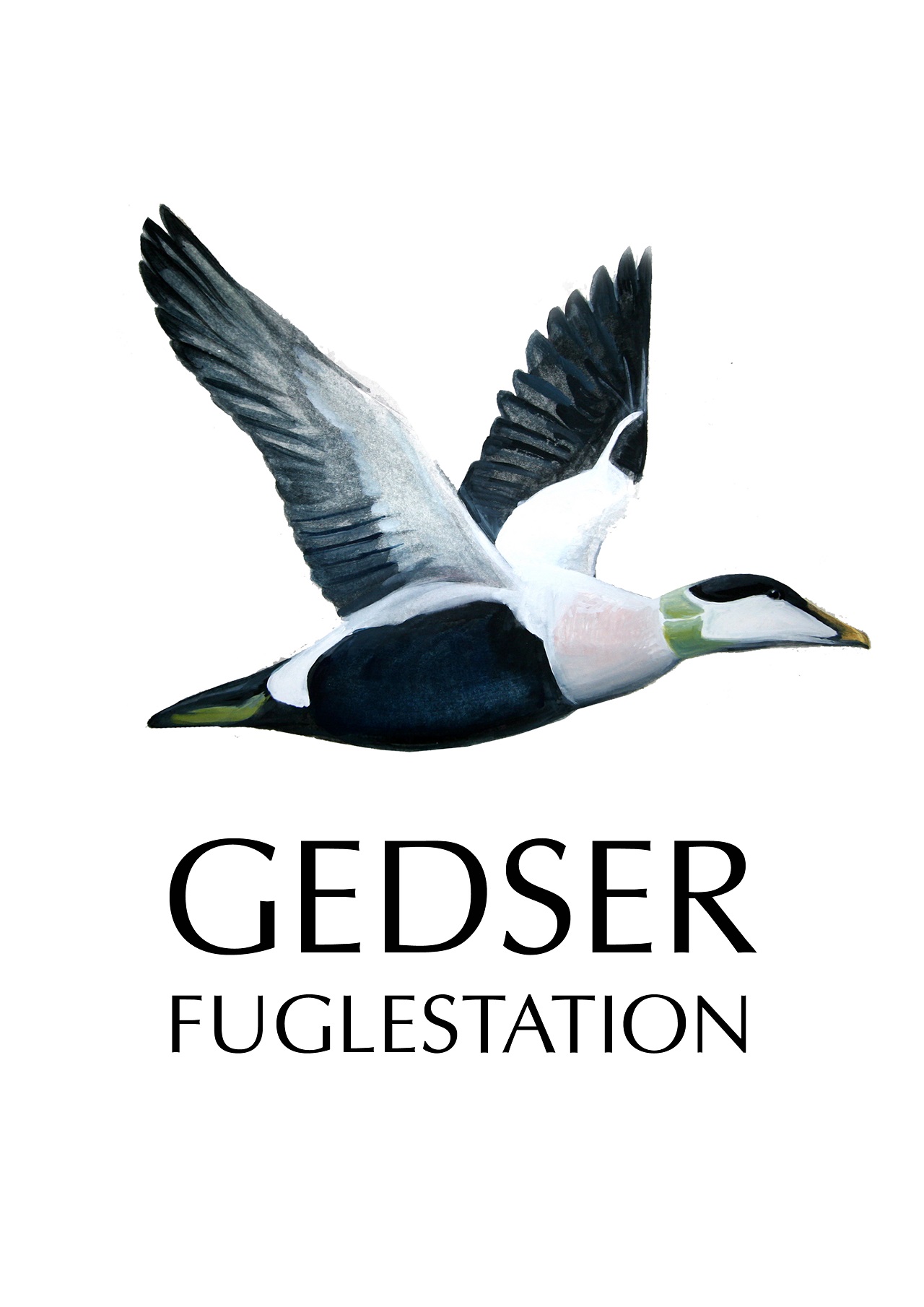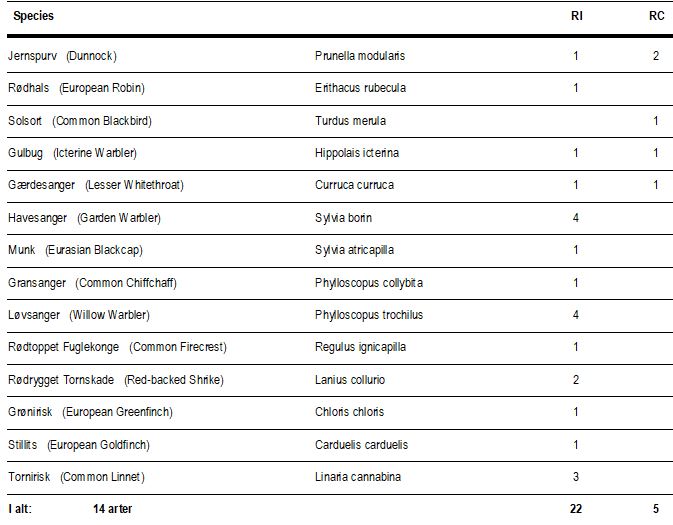Gedser Fuglestation Blog
Her på Gedser Fuglestations blog bringes korte nyheder i dagbogsformat om hændelser på fuglestationen.
Back in the breeding grounds
This morning, we got some birds we had hoped for and a little surprise in the nets: Vagn took out two Red-backed Shrikes “Rødrygget Tornskade” of the nets, one for each of us. Both very pretty males, a nice species to see and to catch (if it is not too many, because I can tell you from experience, many of these are a “blood-test” – these birds can bite quite strong).
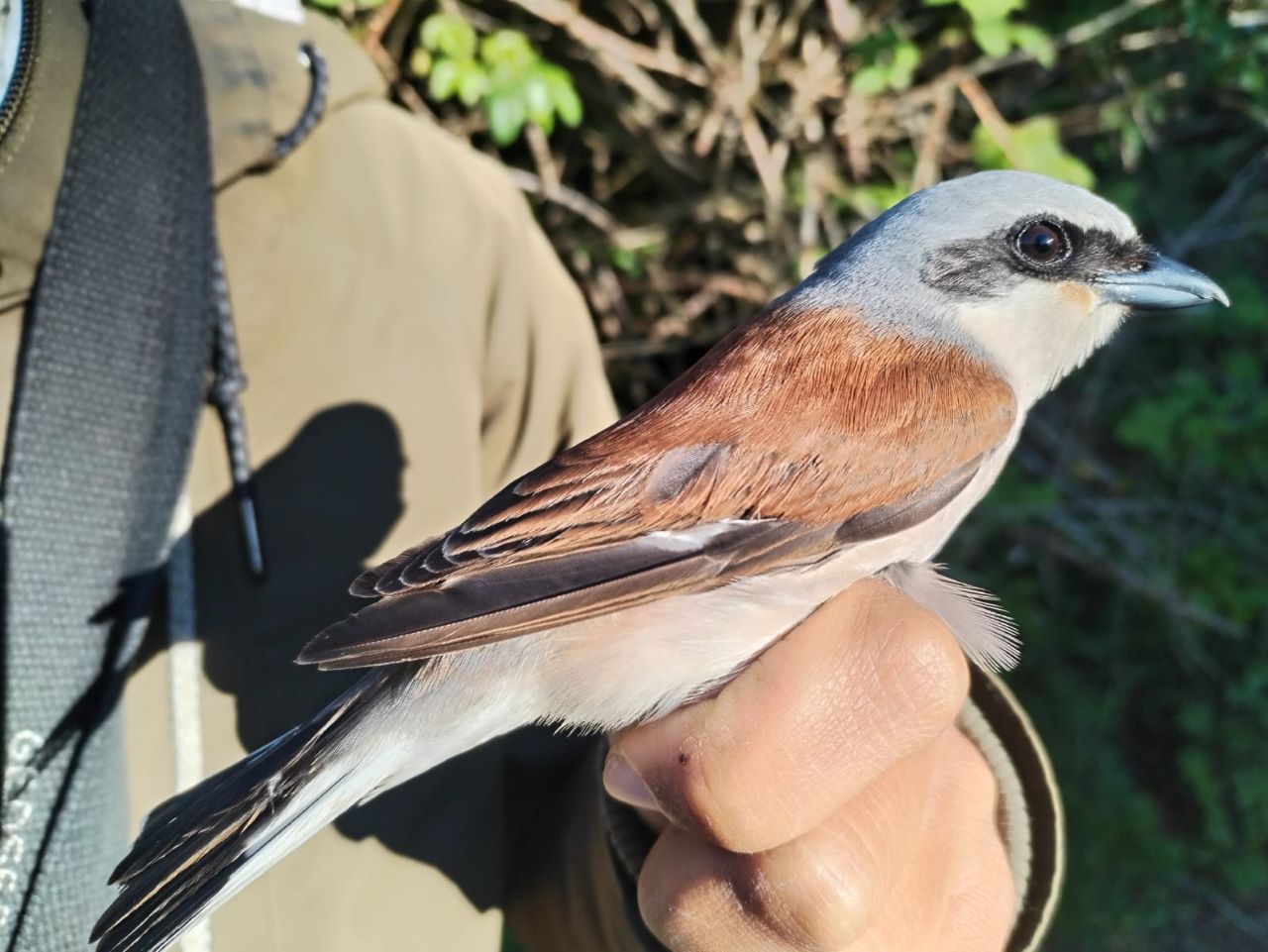
Rødrygget Tornskade, male
In exchange to the Shrike bag Vagn handed to me, he got a recapture Icterine Warbler “Gulbug” which I had taken out of the net, the ring looked a bit older and when Vagn entered data later, he found out, that the bird he had controlled was first caught and ringed by him in May 2022. Always great to recapture your own birds after a long time, especially if it is long-distance migrants like this Icterine Warbler “Gulbug”. It already migrated to its wintering grounds in tropical Africa at least three times, as it was not a freshly hatched first year bird when it was first ringed here. These birds can´t be aged more than “second calendar or older" in spring though, as both adults and young birds do a complete moult on their wintering grounds, so they both come back here with all new feathers that they have moulted and grown in Africa. Impressive, which long migration route such a small passerine, this individual with a medium amount of fat wayed just a bit more than 14 grams, take twice a year, just on its wings!
There was another surprise, that Vagn took out of a net in the closing round, a Firecrest “Rødtoppet Fuglekonge”. These usually pass here in Gedser from around mid-March on and are common to be caught until the beginning of April. So this individual was a bit unexpected and late to be caught.
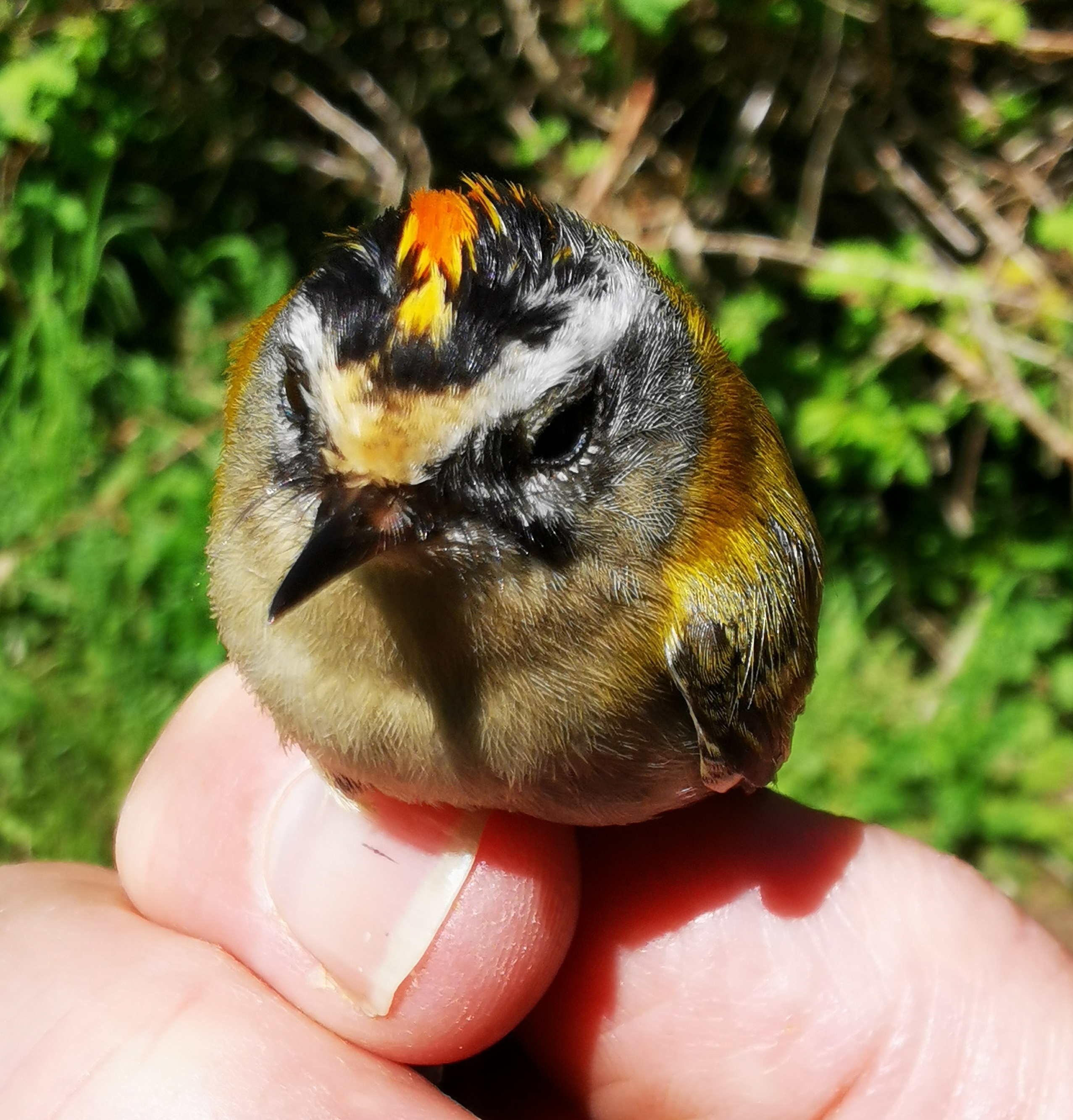
Rødtoppet Fuglekonge
There were also some nice common species in the nets. For example, this beautiful female Linnet “Tornirisk”. It is mostly male birds that we associate with a species, as they usually have more prominent colours, especially in breeding plumage. The females should not be underestimated though. You can´t deny that this female is very beautiful, even if its breast is not shiny red.
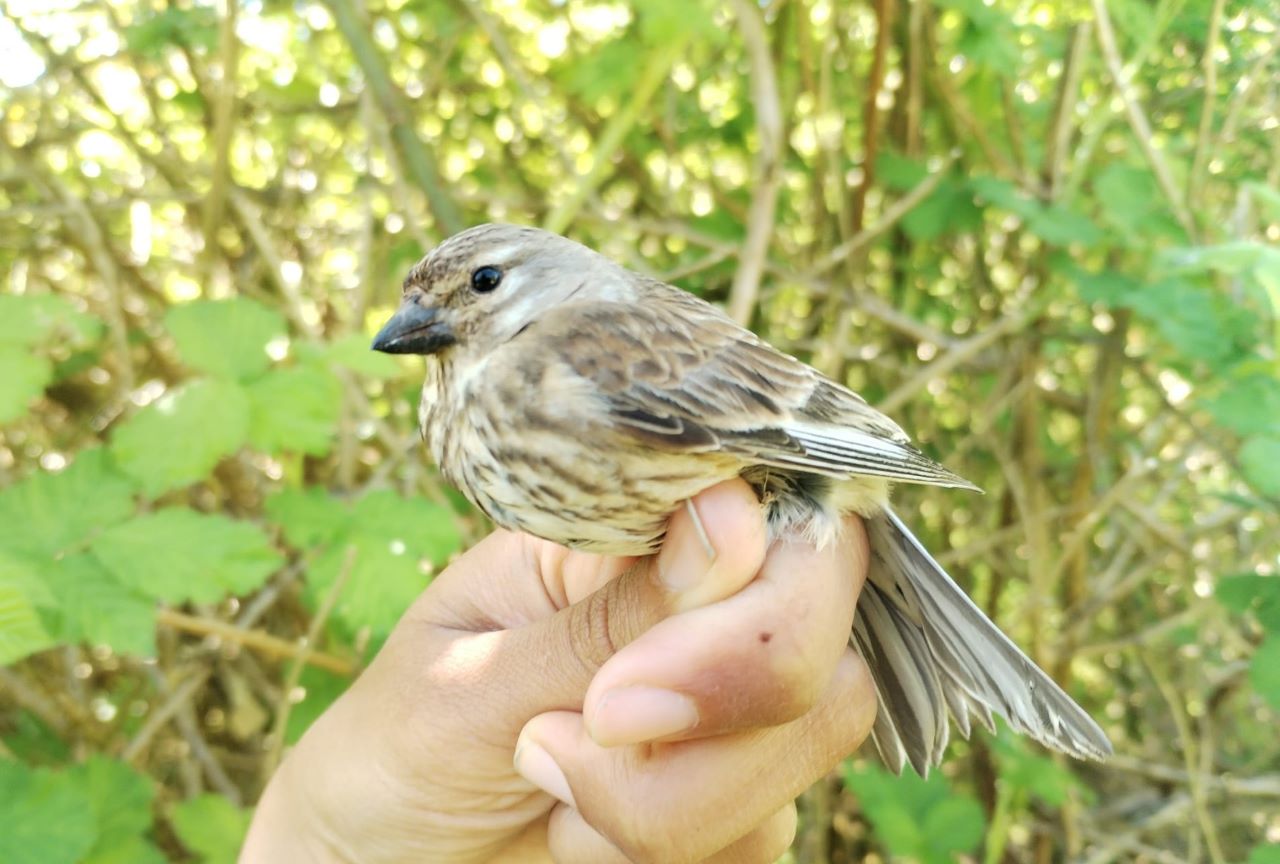
Tornirisk female
Gert came to the station later in the morning and also Tina. Tina and Jasper discussed a bit about the data analyses of ringing data of Icterine Warbler “Gulbug”, Lesser Whitethroat “Gærdesanger”, Blackcap “Munk” and Chiffchaff “Gransanger” he is doing.
After, Gert and I left to Borreby Mose, it was a long trip, but we saw some nice species there. As it was a very rainy winter, there is still more water than usual at many places, also at Borreby Mose, so there were not so many Waders as Gert had expected, but we both had new a species for the year, for Gert it was the Black-tailed Godwit “Stor Kobbersneppe”, for me it was the Temminick´s Stint “Temminicksryle”.
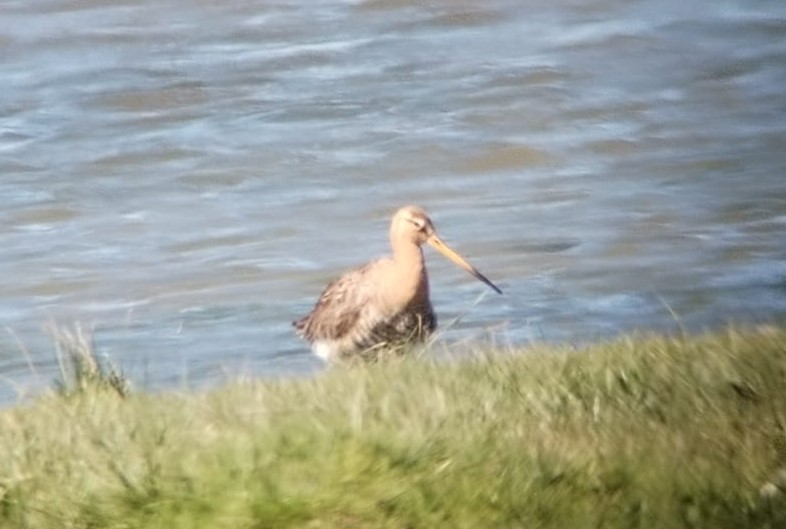
Stor Kobbersneppe
We also had some raptors: a White-tailed Eagle “Havørn”, a Red-Kite Rød Glente” and Marsh Harrier “Rørhøg”.
On Borreby Mose, we found a white flower of which we found out it is Ornithogalum umbellatum.
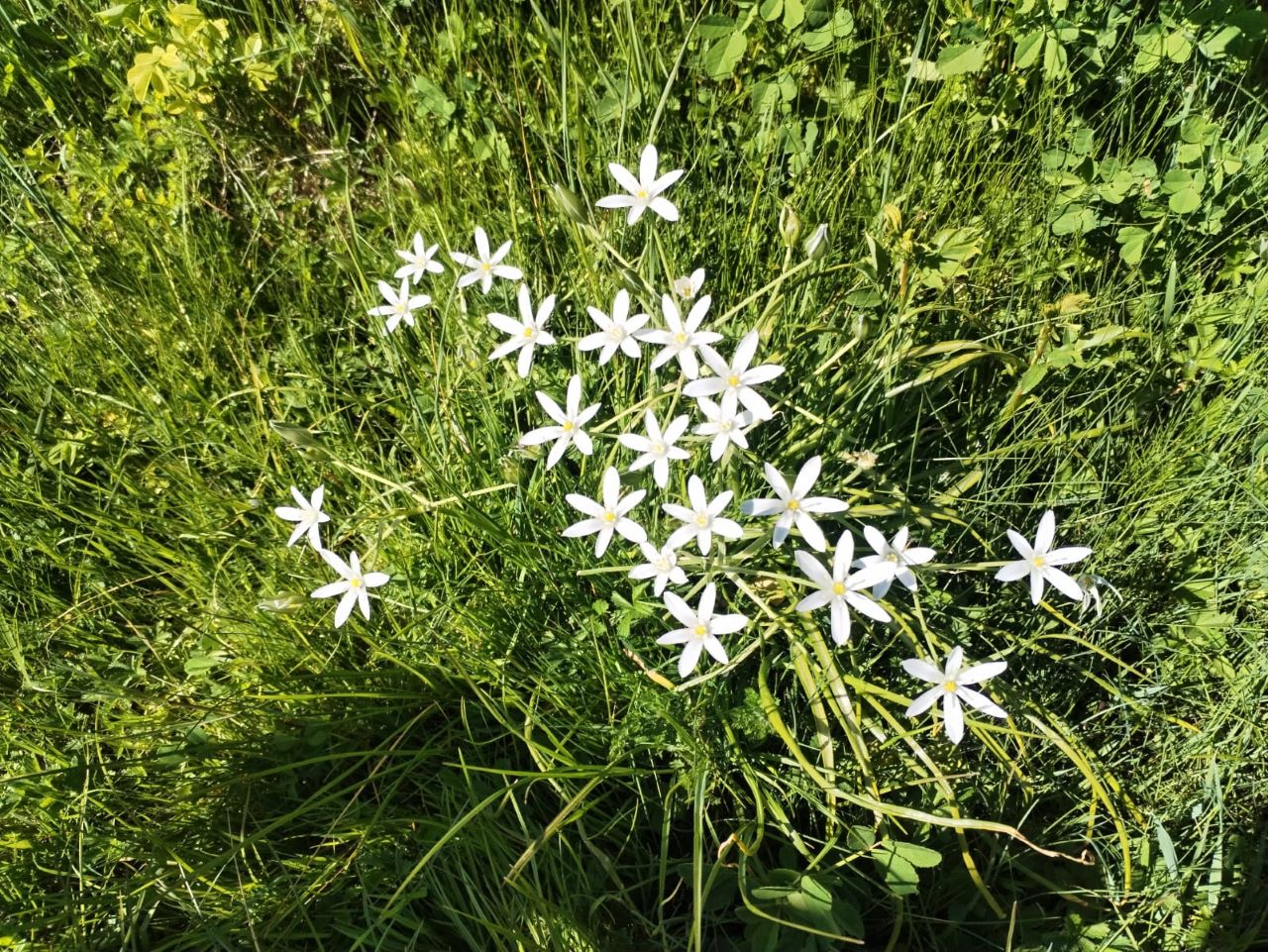
Ornitogalum umbellatum
Vagns whish for tomorrow is a bird with a foreign ring and that would be nice, I agree, and maybe more birds and what about some Flycatchers “Fluesnapper”?
Let´s see, every morning is different.
People: Gert Juul Jeppesen, Tina Elley, Vagn Lind, Jasper Mosman, Hanelie Sidhu
